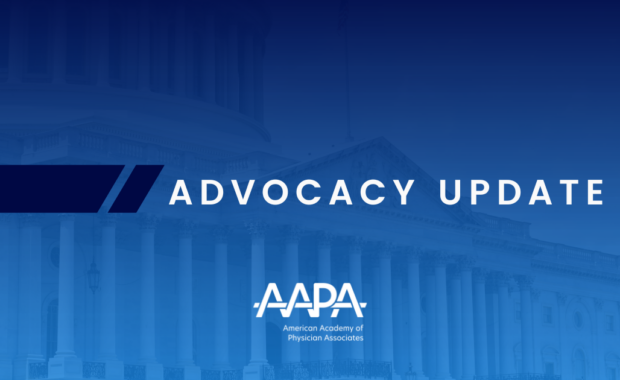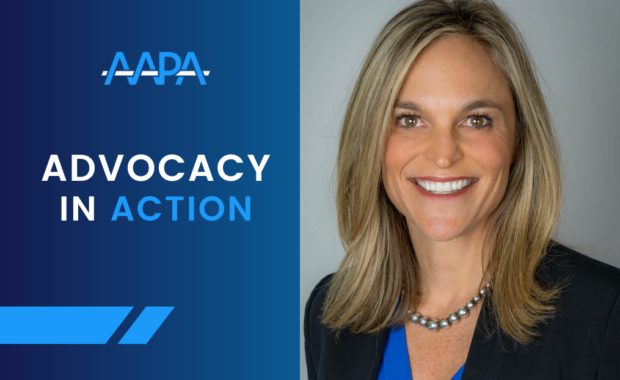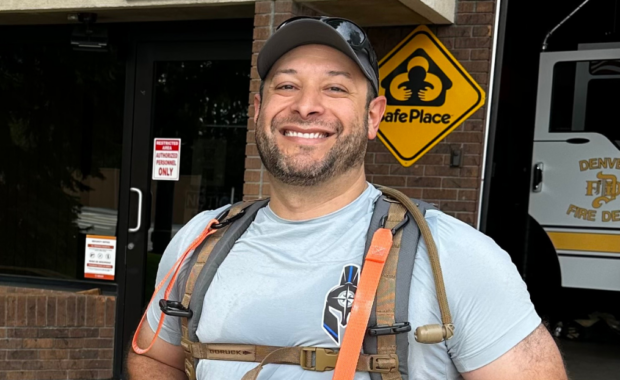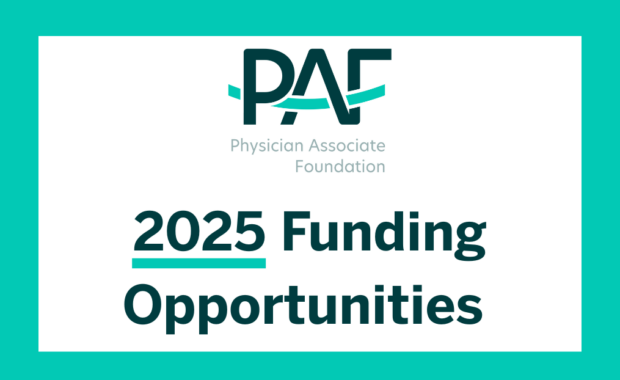Treating Patients with Long COVID: A New Frontier for Providers
APPs are Uniquely Positioned to Play a Role in This Area
June 4, 2021
By Jennifer Walker
In late April, Jaclyn Owens, MHS, PA-C, treated a middle-aged patient with vague symptoms at an urgent care center in Pennsylvania. The woman felt tingling in her arms and fatigue, and she “just didn’t feel right.” Because of her medical history, Owens thought her thyroid might be involved, so she ordered a thyroid-stimulating hormone (TSH) blood test, among other tests. But the patient’s results were normal.
Then Owens asked a question that took the patient’s care plan in a different direction: Had she previously been diagnosed with COVID? She had, which led Owens to suspect the patient was experiencing post-COVID symptoms.
“I explained to her about post-COVID syndrome, and that we aren’t sure what it is and we don’t know what it looks like,” says Owens, regional advanced practice provider (APP) manager for four of Penn Medicine Lancaster General Health’s (LGH) Urgent Care centers in Pennsylvania. “But we do know that it’s occurring.”

Given the reality of post-COVID syndrome, and the fact that more healthcare providers may find themselves treating patients with it, Owens and Joanna Ellis, MSN, CRNP-BC, who practices at Penn Medicine’s Post-COVID Assessment and Recovery Clinic, share how they screen and treat patients experiencing post-COVID symptoms, their advice for APPs who are treating these patients, and why they feel APPs are positioned to lead the way in ensuring patients get the care they need.
[Receive daily alerts with relevant clinical news – included with membership!]
Addressing Post-COVID Symptoms in Urgent Care
There are many terms that providers might use for the symptoms that people have some time after being infected with the virus that causes COVID, including post-COVID syndrome and post-acute sequelae of SARS-CoV-2 infection (PASC). The CDC defines the symptoms that patients have more than four weeks after first becoming infected as post-COVID conditions, while patients who have symptoms that last for weeks or months—a group that is known as long haulers—are said to have Long COVID. People who did not have symptoms when they were infected with COVID may still experience post-COVID symptoms, including fatigue, loss of taste or smell, difficulty concentrating, headaches, difficulty breathing, and depression and anxiety.
The screening process is the first step in caring for patients who have these symptoms and have had a previous COVID diagnosis. In her urgent care centers, Owens says one of the key questions is whether patients had a fever for more than six days while they had COVID; those who did are more likely to experience post-COVID symptoms. After the screening, Owens encourages patients who seem likely to be experiencing these post-COVID symptoms to follow up with their primary care provider for further care.
Asked how she is able to make the connection between current symptoms and a previous COVID diagnosis, Owens says providers can’t be certain that they are linked right now. That’s because “it’s a time in life when stress is high for so many people,” she adds. “But we do have clear examples of people who do not have the capacity they did. One of our [physicians] was a [long-distance] runner and couldn’t run a mile for months after COVID. When something like that happens, it really hits you that this is an odd disease.”
Despite the unknowns, Owens can now refer her patients to the Post-COVID-19 Recovery and Rehabilitation Therapy program at LGH, which was created specifically to address the needs of people who are experiencing post-COVID symptoms. “I think if we can get more programs like this to pop up around the country, it provides places that can accommodate the chronic symptoms and provide an access point for care,” Owens says. “And that’s amazing.”
[How an Upstate New York Hospital System Responded to COVID-19]
A Clinic Devoted to Post-COVID Recovery
Along with the program at LGH, Penn Medicine also has a Post-COVID Assessment and Recovery Clinic, which was opened for patients who had been hospitalized after they were diagnosed with the virus that causes COVID and who were going to need continuity of care with their rehabilitation after they were discharged. Here, Joanna Ellis, a nurse practitioner, saw her first patients in the summer of 2020.
“Our goal is to try and address all the symptoms and concerns these patients have and make sure they’re seeing the right people and not being left in the dust, so to speak,” Ellis says.

The clinic functions as a hub, or a central connection point, where all patients who are experiencing post-COVID symptoms can get screened and then receive referrals for appropriate treatment from specialists. The three most common symptoms Ellis hears about from patients are shortness of breath, chest tightness, and significant fatigue or exercise intolerance. In the clinic, she has screened patients who represent a range of ages, from mid-20s to 80s, and she sees about 18 patients a week. All of the appointments occur through telemedicine.
During patients’ appointments, Ellis first goes through an extensive screening process. She asks about the timeline of their illness and what has been going on since their initial infection, then goes through several screening tools that focus on physical symptoms, changes in mood, and cognitive and functional deficits. Then, once the 30- to 45-minute screening is complete, she discusses recommendations and referrals to specialists, such as cardiology or pulmonology.
To give a real-life example of this process, Ellis shares a story about a woman in her 60s who had been hospitalized for two weeks after a COVID diagnosis last November. She made an appointment with the clinic because she was experiencing shortness of breath, chest pain, and recurrent headaches. Through the screening, Ellis also learned that the patient was having difficulty remembering what had happened the day before. Ellis referred the patient to pulmonology to treat her shortness of breath and talked with her about potentially going to a neurologist to address the headaches and post-COVID cognitive changes.
For all patients, Ellis will ask them to follow up with her a month or two after their initial screening to update her on any symptoms that may have changed. She also communicates with primary care providers and specialists if they have questions, and she’ll do her very best to find the answers to patients’ questions, even if she doesn’t initially know how to respond, and to tell them when she doesn’t know the answer.
“I try to be completely transparent with the patient,” she says.
[Advance your career with leadership and management training courses.]
How APPs Can Be Effective Leaders in This Space
As health systems might be looking for providers to spearhead their post-COVID treatment efforts, APPs could find opportunities in this area. “They have the ability to see patients, develop a rapport, and to be able to follow them over the course of this illness and as they get better,” Ellis says.
Owens also points out that, given the rising number of PAs and NPs, APPs are now working in all specialties that may be encountered by patients who are experiencing post-COVID symptoms, from urgent care and primary care to rehabilitation medicine and telemedicine. “The APP professions have the unique abilities to be in everything and everywhere at one time,” she says. APPs are also in leadership positions—and leaders will be necessary to ensure these patients get the care they need.
[PAs and NPs in any specialty can visit AAPA’s COVID-19 Resource Center, which provides a collection of resources that help providers stay current about the prevention and treatment of the virus and to answer patient questions about vaccines.]
When treating these patients, Owens thinks it’s important to be a good listener, calm, and empathetic, especially because the care experience can be challenging for both patients and providers without clear answers about treatment. “It’s very, very frustrating to treat a patient who says, ‘I feel foggy,’ because that’s not a very descriptive [symptom],” Owens says. “But we have to take a step back and realize what these people have gone through, and be patient and understanding and meet everyone where they are.”
Ellis also advises other APPs to assure patients that their concerns are valid. Many patients have told Ellis that people in their lives say they’re crazy for thinking they have post-COVID symptoms. “[It’s important] to reassure the patient that what they are experiencing is not something in their head,” she says.
She also recommends APPs be honest about what they know and what they’re still trying to understand. When patients want a definitive answer about whether they’ll get better, Ellis tells them that’s a question she can’t answer right now. “Be very open with the patient and give as much information as you know, but also inform them that there’s still a lot of unknowns,” she says. “We’re learning as they’re learning.”
Jennifer Walker is a freelance writer in Baltimore, MD. Contact Jennifer at [email protected].
You May Also Like
AAPA COVID-19 Resource Center
Four Emergency Medicine PAs Share Reasons for Getting the COVID Vaccine
PA Andrea Lowe: Pandemic is a Marathon, Not a Sprint
Thank you for reading AAPA’s News Central
You have 2 articles left this month. Create a free account to read more stories, or become a member for more access to exclusive benefits! Already have an account? Log in.



